We use cookies to make your experience better. To comply with the new e-Privacy directive, we need to ask for your consent to set the cookies. Learn more.
BREDENT WAXES SUPPORT
Biotec Wax System
Biotec Modeling Wax
Modeling wax that meets the highest demands on modeling properties, shrinkage and complete burn out.
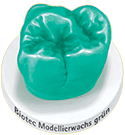
- The excellent scraping properties ensure perfect fit of the wax crown on the die.
- Wax residues can be blown away easily.
- Low shrinkage leads to high precision of fit.
- Residue-free burn out is the prerequisite for homogeneous casting.
- Perfectly suitable for modeling pressable ceramic crowns and inlays.
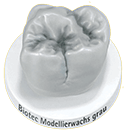
Biotec Wax for Outer Copings
Modeling wax for uniform layering with low shrinkage and outstanding burn out properties.
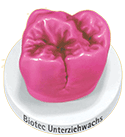
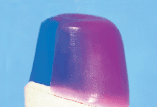
Burning without any residue and reduced swelling behavior provide perfect preconditions for top-quality casting results.
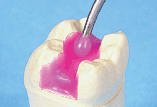
Burning without any residue and reduced swelling behavior provide perfect preconditions for top-quality casting results.
Biotec Cervical Wax
Modelling wax for precision-fit crown margins due to low shrinkage and outstanding burn out properties.
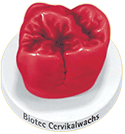
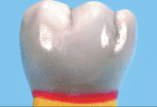
The special consistency of this wax, minimum shrinkage and extremely low quantity of residues of combustion ensure perfect fit of the crown margin.
Biotec Blocking Out Wax
Special wax for blocking out undercuts with very good scraping properties. No discoloration on the plaster model after boiling out.
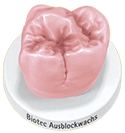
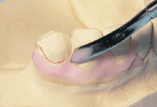
The special components of the blocking out wax ensure perfect blocking out of undercuts.
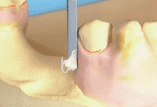
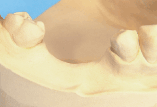
Easy and quick scraping allows one to save time.
Biotec Milling Wax
Excellent milling wax with superb modelling properties.
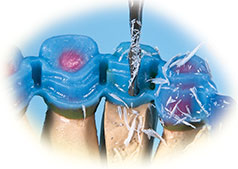
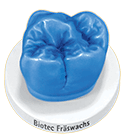
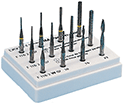
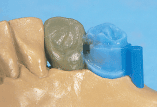
Enormous amount of time is saved due to good modelling properties since no other wax is required for the shear distributor.
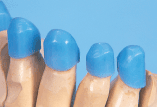
Extremely accurate milling wax to produce smooth and shining surfaces during milling.
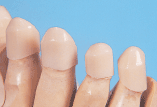
Can be used for pressed ceramics since the wax burns out almost entirely.
Biotec Wax Sprues
Modeling wax for uniform layering with low shrinkage and outstanding burn out properties.
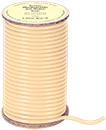
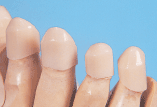
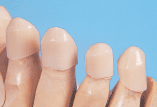
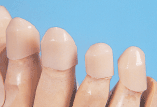
High flexibility and low elastic recovery after shaping allow specific stress-free attaching of the sprues. Residue free burn out is the basis for perfect casting results. Perfectly suitable for modeling pressed ceramic crowns and inlays.
Bredent Casting Technique
Bredent Casting Technique According to Sabath
“A dental technician’s manual for producing precise fitting, homogenous and biocompatible dental castings”
The Bredent Casting Technique (According to Sabath) is an instructional user manual with simplified, reliable scientific data and experience in the dental casting process. The main purpose of the book is to provide practical knowledge for the dental technician rather than scientific or metallurgical formulas and processes. It is 230 page book assembled in a loose-leaf, hard-backed, ring binder style with 6 chapters.
Book Table of Content
Ch. 1: Investment Compounds - composition of investments and application ranges, processing information, wax movement and thermal wax tension, pressure investing, comparison of ring flasks systems and investing.
Ch. 2: Preheating (Burn-Out) - Linear preheating, Kiln types and their effects on investment ring molds, rapid fire-preheating techniques and practice-related case studies about preheating and castings fit results.
Ch. 3: Casting - Materials, alloy melting (flame, induction, resistance, electric arc), comparison of casting methods and their results.
Ch. 4: Cast-Port supply (Sprueing) – Direct and indirect sprueing techniques and inflow of metal.
Ch. 5: Bredent Casting Technique According to Sabath.
Ch 6: Refractory model casting techniques - Choosing proper sprues and attaching pressure equalization channels.
Book Preface by Peter Brehm, CEO (Bredent Germany)
Dentistry at large, and in particular, if it is performed while assuming the responsibility of harming the patient as little as possible by the jointly determined, necessary therapeutic measures, always depends on an appropriately geared dental technology for its implementation.
For this reason, bredent aim for the goal to offer both dentist and dental technician a closed system, which conveys optimal security and trust in all materials for the patient. Comprehensive system solutions offer a symbiosis of matching materials and devices, which minimizes the expenditure of human labor and increase precision, so that any working process can be organized in a more efficient and economic way. For the dentist, it is important to know that the quality of his work depends directly on the quality his dental technician delivers. And the dental technician in turn depends on the excellent quality of the materials made available to him.
As the human being develops, he places higher and higher demands on the quality of life. Right from the start, he learned from natural circumstances, influenced and changed them. He recognized chemophysical processes and developed techniques, which enabled him to create materials that are not found at all in nature. And ever since the scanning electron microscope was invented, he is able to analyze and refine most of these chemophysical processes as well.
Active, scientific work - regardless of which type - is subject to a continuously repeating cycle. Acquired knowledge is utilized, advanced, realized and analyzed. Moreover, the positive symptoms resulting from this etiology should be integrable into the repetitive cycle. Solutions are developed to realize knowledge. And those who advance will also meet success.
The more often each cycle is passed, the more knowledge we accumulate by new cognitions. The very same applies to the Bredent Casting Technique (according to Sabath).
The many years of dealing with the matter - in theory as well as in practice - can be evaluated and realized. Therefore, this book will give you information of how the consistent refinement of numerous options can realize your strive for perfection in casting technology.
I hope this book will help all readers and users to meet their individually desired goals.
Sincerely yours,

Peter Brehm, CEO
Bredent Germany
Bredent Casting Technique according to Andreas Sabath
Casting is not an invention made in modern times, but human being adopted this technique from nature. A volcano, called fire spitting mountain in the early times, erupted magma and gasses from the depth of the earth. This liquid lava broke its way into the valley through flow channels. The lava surface solidified and incrusted, and thus created bizarre outlines and formations. Lava that had entered certain terrains molded these shapes, and that way human beings recognized early that materials could be set in moulds.
The outer walls of the lava cooled down and solidified. Flow ducts, which maintained the heat within their centre, developed, and enabled the lava to flow steadily and to cover great distances within these channels. And after the human being gained control of the fire and learned to take advantage of it for himself, the Bronze Age and the Iron Age had begun.
The human being had learned to liquefy materials by fire, cast them in moulds, or turn them into different shapes by heating them with fire. He learned from nature first, and later on, he gained from it.
The half-life of knowledge got shorter and shorter. With the use of energies and the transmission of forces, technologies were more and more refined. Once mankind started to commit the knowledge in their minds to paper, progression - in the sense of improvement and advancement - became unstoppable. New insights lead to ever-growing new developments. And thus, the cycle proceeds towards new knowledge and advances our development.
We can, however, occupy ourselves with all developments and learn from them. Thus, each of us is influenced by others, and influences others in turn. A Everything that made an impact on us in the past will turn up again in various ways. Active scientific involvement - regardless of the development or advancement of knowledge - is subject to a continuously repeating cycle.
- We start the cycle by using acquired knowledge.
- We refine the acquired knowledge mentally and search for options.
- We attempt to realize our thoughts and insights.
- We examine the results of our attempts and analyze them.
- We recognize symptoms, both positive and negative ones.
- We search for causes that explain the positive symptoms, so that our results will become reproducible, and for solutions to the negative symptoms through new ideas.
- We develop solutions to realize these ideas.
- We realize the ideas and thus acquire new knowledge, which we take into consideration again and start the cycle at point A anew.

Only those problems of this cycle, which were solved by gaining new knowledge and thus broadened our knowledge and our insights without breaking the continuous cycle of collecting scientific knowledge, advance us in our development.
We should not regard this development as a burden, but as a chance. Only those who continuously advance will benefit from this in their professional life and will enjoy their work.
Science is not about teaching the truth, but represents result and sum of what we do repeatedly. The more often we pass or go through the cycle, the more knowledge we gather by experience. The same applies to the Casting Technique according to Sabath. The many years of dealing with this subject, in theory and practice, from own experience and from the knowledge of others, are evaluated and processed here.
The subject of casting also includes the working processes for fabricating moulds and the auxiliary materials required for this, and the chemophysical processes during melting, casting and the resolidification of materials. Based on this experience, the following chapters describe the various casting methods and cast port systems as well as their functioning.
In the descriptions of the processing and casting techniques, we frequently encounter developments, which were incorporated based on scientific research.
This book is designed as a handbook for the dental technician. For this reason, any scientific or metallurgic aspects as well as any chemical formula were deliberately omitted. It is strictly focused on the essential aspects that must be available to the dental technician in order to produce reproducible, homogeneous, and patient-compatible results. These are the standards by which the quality of dental prostheses is measured.

Andreas Sabath
Dipping Wax
Dipping Wax
An extremely precise pattern produced using our dipping wax without the need to re-wax the cervical margin.
Using this method you can save up to 90 % of your material costs compared to copings made using vacuum forming systems. The dipping wax requires no separating medium for removal from smooth preparations or metalwork. The wax forms a constant thickness. Dipping wax is supplied as beads.

Shows the constant wax thickness and excellent marginal fit without having to re-wax the cervical margin. Dipping wax is supplied as beads.

The dipping wax requires no separating for removal from smooth preparations or metalwork. Hence it is ideal for precision dental technical work.

Use the white wax to block out untercuts or to build up the ideal form of preparation. It does not adhere to the other waxes.

Use the dentine colored wax in conjunction with castable ceramics and when producing Life Color wax copings.
Dipping Wax MSDS
MATERIAL SAFETY DATA SHEET
Product Name: DIPPING WAX
Product Code: 510 008 50, 510 008 60, 510 008 70
Before using this product, please read and follow these instructions carefully.
1. Composition/Information on ingredients
Product Description/Use: Mixture of natural and synthetic waxes.
2. Hazard Identification
Hazard codes: This product is not regulated by the GefStoffV, however contact with the liquid wax may cause burns. Temperatures exceeding 150 C may lead to the generation of harmful vapor or gas.
3. First aid procedures
Inhalation: Get plenty of fresh air; in case of complications seek medical assistance.
Skin contact with melting: Cool immediately with plenty of running water for at least 15 minutes. Do not try to remove product from the skin. Bandage sterile, then seek medical assistance immediately.
Eye contact: Flush eyes immediately with purified water for at least 15 minutes; seek medical assistance.
Ingestion: Usually medical attention is not necessary.
4. Fire fighting procedures
Suitable extinguishing media: CO2, dry chemicals, foam.
Unsuitable extinguishing media: Water
Exposure hazards: Thermal decomposition can lead to the generation of irritant vapors and/or fire.
Special equipment: Pressure demands self-contained breathing apparatus should be provided to fire fighters in building.
5. Accidental release procedures
Precautions - individuals: Do not breathe vapor if product is hot. Good ventilation.
Precautions - environment: Avoid discharge into environment.
Cleaning up spillage: Allow hot material to cool down and solidify, then collect and store in a suitable container.
6. Storage and handling
Storage: Store in a dry place. Avoid temperatures exceeding 35 C.
Handling: Keep the liquid product away from sources of ignition - no smoking. Do not breathe vapor.
7. Exposure control/individual protection
Individual:
Protection-hands: Protective gloves.
Protection-eyes: Protective glasses.
Protection-skin: Working coat (cotton).
General procedures with respect to individual hygiene: Do not eat, drink, or smoke while working. After working, wash your hands with soap and water.
8. Physical and chemical properties
Appearance: Solid.
Color: Various.
Odor: Odorless.
Data relevant to safety:
Melting point/interval: 80-85 C.
Solubility in water (20 C; % by weight): Insoluble.
9. Stability and reactivity
Conditions to avoid: Avoid working temperatures exceeding 120 C.
Materials to avoid: Avoid strong oxidants.
Hazardous decomposition products: Thermal decomposition leads to the generation of irritant and harmful gases.
10. Toxicological information
Toxicological evaluation: Following the general procedures of maintenance of industrial health and safety standards, there should be no toxicological risks.
11. Ecological information
Avoid discharge into environment.
12. Disposal consideration
The product and container should be disposed in agreement with your local national regulations.
13. Regulatory information
Hazard symbols and identification: Contains no hazardous substances.
14. Other information
Data sheet completed by: Research & Development Department - Bredent (Germany).
This Material Safety Data Sheet is provided by way of guide for the use of our product and is correct to the best of our knowledge.
However, we can't offer any guarantee as to its accuracy or exhaustiveness. All chemicals may present unforeseen risks and should be used with caution.
We cannot guarantee that the risks referred above are the only risks present. The final choice of the application of a product is thus the sole responsibility of the user.
Elaflex
Super-elastic dipping wax for highly precise wax copings

Even in inlays, the cavities can be precisely prepared using Elaflex. This way, modeling is simplified.

Elaflex is so flexible that the wax coping is not deformed when it is removed.

Elaflex is self-insulating on all metal parts that are polished to high luster.
Elaflex MSDS
MATERIAL SAFETY DATA SHEET
Product Name: ELAFLEX DIPPING WAX
Product Code: 510 009 00
Before using this product, please read and follow these instructions carefully.
1. Composition/Information on ingredients
Product Description/Use: Mixture of natural and synthetic waxes and pigments.
2. Hazard Identification
Hazard codes: According to "GefStoffV", this wax is not classified as a hazardous substance. Nevertheless, direct skin contact with the molten product will cause burns and exposing this product to temperatures over 150º C can lead to the generation of harmful vapors.
3. First aid procedures
Inhalation: Get plenty of fresh air; in case of complications seek medical assistance.
Skin contact with melting: Cool burns immediately with plenty of running water for at least 10 minutes, bandage sterile, then seek medical assistance immediately. Do not try to remove the solidified wax from the skin.
Eye contact: Flush immediately with purified water for at least 15 minutes; seek medical assistance.
Ingestion: Usually medical attention is not necessary. Drink plenty of water and induce vomiting, if person is conscious.
4. Fire fighting procedures
Suitable extinguishing media: CO2, dry chemicals, foam.
Unsuitable extinguishing media: Water
Exposure hazards: Thermal decomposition can lead to the generation of irritant vapors and/or fire.
Special equipment: Pressure demands self-contained breathing apparatus be provided to fire fighters.
5. Accidental release procedures
Precautions - individuals: Avoid eye and skin contact, do not breathe in vapor, and use in a well ventilated are while molten product solidifies.
Precautions - environment: Avoid discharge into environment.
Cleaning up spillage: Collect the solidified product and store in a suitable container for disposal.
6. Storage and handling
Storage: Store in a dry place. Avoid temperatures exceeding 35 C.
Handling: When handling the molten wax, avoid direct eye or skin contact and do not inhale vapor. Always use in a well-ventilated area.
7. Exposure control/individual protection
Individual:
Protection-hands: Protective gloves.
Protection-eyes: Protective glasses.
Protection-skin: Working coat (cotton).
General procedures with respect to individual hygiene: Do not eat, drink, or smoke while working. After working, wash your hands with soap and water.
8. Physical and chemical properties
Appearance: Solid.
Color: Purplish.
Odor: Typical.
Data relevant to safety:
Melting point: 60 - 70 C.
Dropping point: 75 - 80º C.
Solubility in water (20 C; % by weight): Insoluble.
9. Stability and reactivity
Conditions to avoid: Avoid working temperatures exceeding 150 C.
Materials to avoid: Avoid strong oxidants.
Hazardous decomposition products: Thermal decomposition leads to the generation of irritant and harmful vapors.
10. Toxicological information
Toxicological evaluation: Following the standard procedures of maintenance of industrial health and safety standards, this product should not have any toxicological properties.
Sensitization: None have been reported as of yet.
Carcinogenic, teratogenic or mutagenic effects: None have been reported as of yet.
11. Ecological information
Avoid discharge into environment.
12. Disposal consideration
Product/Soiled container: Dispose in agreement with local and national regulations.
13. Export regulation
Transport: Non-regulated.
14. Regulatory information
Hazard symbols and identification: This product is not classified as a hazardous substance.
15. Other information
Data sheet completed by: Research & Development department - Bredent (Germany).
This Material Safety Data Sheet is provided by way of guide for the use of our product and is correct to the best of our knowledge.
However, we can't offer any guarantee as to its accuracy or exhaustiveness. All chemicals may present unforeseen risks and should be used with caution.
We cannot guarantee that the risks referred above are the only risks present. The final choice of the application of a product is thus the sole responsibility of the user.
Visio-Dip
Dipping wax allowing visual control at a wax thickness of 0.3 mm

Even in inlays, the cavities can be precisely prepared using Elaflex. This way, modeling is simplified.

Elaflex is so flexible that the wax coping is not deformed when it is removed.
MATERIAL SAFETY DATA SHEET
Product Name: VISIO-DIP DIPPING WAX
Product Code: 510 007 30
Before using this product, please read and follow these instructions carefully.
1. Composition/Information on ingredients
Product Description/Use: Mixture of natural and synthetic waxes and pigments.
2. Hazard Identification
Hazard codes: According to "GefStoffV", this is not classified as a hazardous substance. Nevertheless, direct skin contact with the molten product will cause burns and exposing this product to temperatures exceeding 150º C can lead to the generation of harmful vapors.
3. First aid procedures
Inhalation: Get plenty of fresh air; in case of complications seek medical assistance.
Skin contact with melting: Cool burns immediately with plenty of running water for at least 10 minutes, bandage sterile, then seek medical assistance immediately. Do not try to remove the solidified wax from the skin.
Eye contact: Flush immediately with purified water for at least 15 minutes; seek medical assistance.
Ingestion: Usually medical attention is not necessary. Drink plenty of water and induce vomiting, if person is conscious.
4. Fire fighting procedures
Suitable extinguishing media: CO2, dry chemicals, foam.
Unsuitable extinguishing media: Water
Exposure hazards: Thermal decomposition can lead to the generation of irritant vapors and/or fire.
Special equipment: Pressure demands self-contained breathing apparatus be provided to fire fighters.
5. Accidental release procedures
Precautions - individuals: Avoid eye and skin contact, do not breathe in vapor, and use in a well ventilated are while molten product solidifies.
Precautions - environment: Avoid discharge into environment.
Cleaning up spillage: Collect the solidified product and store in a suitable container for disposal.
6. Storage and handling
Storage: Store in a dry place. Avoid temperatures exceeding 35º C.
Handling: When handling the molten wax, avoid direct eye or skin contact and do not inhale vapor. Always use in a well-ventilated area.
7. Exposure control/individual protection
Individual:
Protection-hands: Protective gloves.
Protection-eyes: Protective glasses.
Protection-skin: Working coat (cotton).
General procedures with respect to individual hygiene: Do not eat, drink, or smoke while working. After working, wash your hands with soap and water.
8. Physical and chemical properties
Appearance: Solid.
Color: Orange.
Odor: Typical.
Data relevant to safety:
Melting point: 60 - 70 C.
Dropping point: 75 - 80º C.
Solubility in water (20 C; % by weight): Insoluble.
9. Stability and reactivity
Conditions to avoid: Avoid working temperatures exceeding 150 C.
Materials to avoid: Avoid strong oxidants.
Hazardous decomposition products: Thermal decomposition leads to the generation of irritant and harmful vapors.
10. Toxicological information
Toxicological evaluation: Following the standard procedures of maintenance of industrial health and safety standards, this product should not have any toxicological properties.
Sensitization: None have been reported as of yet.
Carcinogenic, teratogenic or mutagenic effects: None have been reported as of yet.
11. Ecological information
Avoid discharge into environment.
12. Disposal consideration
Product/Soiled container: Dispose in agreement with local and national regulations.
13. Export regulation
Transport: Non-regulated.
14. Regulatory information
Hazard symbols and identification: This product is not classified as a hazardous substance.
15. Other information
Data sheet completed by: Research & Development department - Bredent (Germany).
This Material Safety Data Sheet is provided by way of guide for the use of our product and is correct to the best of our knowledge.
However, we can't offer any guarantee as to its accuracy or exhaustiveness. All chemicals may present unforeseen risks and should be used with caution.
We cannot guarantee that the risks referred above are the only risks present. The final choice of the application of a product is thus the sole responsibility of the user.
Sculpting Wax
MATERIAL SAFETY DATA SHEET
Product Name: K2 EXACT CARVING WAX
Product Code: 510 009 02, 510 009 03, 510 009 04, 510 009 05
Before using this product, please read and follow these instructions carefully.
1. Composition/Information on Ingredients
Product Description/Use: Mixture of natural and synthetic waxes and auxiliary substances.
2. Possible hazards
According to the information available to Bredent (Germany), hazard marking is not necessary. Danger of combustion if the product is hot. In connection with thermal decomposition or overheating, the formation of health-hazardous gases, fumes or aerosols can not be excluded.
3. First Aid Procedures
Inhalation: Get plenty of fresh air, and in case of complications, seek medical attention.
Skin contact with hot substance: Rinse the affected areas with plenty of cold water. Cover with sterile gauze and seek medical attention immediately. Do not try to remove the wax from the skin.
Eye contact: Remove in the usual manner for solid foreign bodies.
Ingestion: Usually there is no need for medical attention.
4. Fire Fighting Procedures
Suitable extinguishing media: Foam, powder, CO2.
Unsuitable extinguishing media: Water.
Special hazard: None from the product.
5. Accidental Release Procedures
Precautions - individuals: Avoid contact with eyes and skin, do not breathe vapor.
Hot product: Allow to cool.
Cool product: Collect and reclaim or dispose of in suitable containers.
6. Storage and Handling
Take measures to prevent electrostatic charging.
This product can only form inflammable mixtures if it's heated to temperatures above the flash point.
Protect against moisture.
7. Exposure Control/Individual Protection
Technical protection measures: When product is hot, avoid the formation of wax fumes and mists. If this is not possible, ensure that there is sufficient ventilation.
Individual:
Breathing protection: Only in the event of wax fumes/mists.
Hand protection: In the event of extended skin contact.
Eye protection: Protective goggles if there is a risk of splashing.
Body protection: If contact with hot product is a possibility, wear heat-resistant protective work clothing.
Personal and hygiene measures: Do not eat, drink or smoke when working. After working, wash your hands with soap and rise with water.
8. Physical and Chemical Properties
Appearance: Solid.
Color: Various.
Odor: Odorless.
Change of state:
Setting point: 65 - 75º C.
Flash point: > 100º C.
Inflammation point: > 200º C.
Density (at 20º C): 1.0 - 1.02 g/cm3.
Solubility in water (at 20º C): Insoluble.
9. Stability and Reactivity
Conditions to avoid: Overheating.
Materials to avoid: Strong oxidants.
Hazardous decomposition products: In connection with thermal decomposition or overheating, the information of health-hazardous gases, fumes or aerosols can not be excluded.
10. Toxicological Information
Toxicological tests: Non-toxic; if fundamental rules of worker protection and industrial hygiene are followed, this product causes no health disturbance.
Sensitization: None have been reported as of yet.
Carcinogenic teratogenic or mutagenic effects: None have been reported as of yet.
11. Ecological Information
Water hazard class 0; generally represents no hazard to water.
12. Disposal Consideration
Product: Small quantities (up to approximately 200 g.) can be disposed of together with household waste.
Soiled container: Dispose of together with household waste.
13. Export Regulations
Transport: Not hazardous goods under transport regulations.
14. Regulatory information
Hazard symbol: This product is not classified as a hazardous substance.
15. Other information
Data sheet completed by: Research & Development Department - Bredent (Germany).
This Material Safety Data Sheet is provided by way of guide to the use of our product and is correct to the best of our knowledge.
However, we can't offer any guarantee as to its accuracy or exhaustiveness. All chemicals may present unforeseen risks and should be used with caution.
We cannot guarantee that the risks referred above are the only risks present. The final choice of the application of a product is thus the sole responsibility of the user.
MATERIAL SAFETY DATA SHEET
Product Name: GECKO MODELING WAX
Product Code: 510 006 01, 510 006 02, 510 006 03, 510 006 04
Before using this product, please read and follow these instructions carefully.
1. Composition/Information on Ingredients
Product Description/Use: Mixture of natural and synthetic waxes and pigments.
2. Hazard Identification
Hazard codes: According to "GefStoffV", this product does not have to be classified as a hazardous substance. Nevertheless, direct skin contact with the molten product will cause burns and, in addition, exposing this product to temperatures exceeding 150º C can lead to the generation of harmful vapors.
3. First Aid Procedures
Inhalation: Get plenty of fresh air, and in case of complications, seek medical attention.
Skin contact with hot substance: Cool burns immediately with running water for at least 10 minutes, bandage sterile, then seek medical attention immediately. Do not try to remove the solidified wax from the skin.
Eye contact: Flush with pure water for at least 15 minutes immediately; then seek medical attention.
Ingestion: As this product is non-toxic, usually there is no need for medical attention. Drink plenty of water and induce vomiting if person is conscious.
4. Fire Fighting Procedures
Suitable extinguishing media: Foam, dry chemicals, CO2.
Unsuitable extinguishing media: Water
Exposure hazards: Thermal decomposition can lead to the generation of irritant vapors and gases and/or fire.
Special equipment: Pressure demand self-contained breathing apparatus should be provided to fire fighters in buildings.
5. Accidental Release Procedures
Precautions - individuals: Avoid contact with eyes and skin, do not breathe vapors and make sure you're in a well-ventilated area while molten product solidifies.
Precautions - environment: Avoid discharge into environment.
Cleaning up spillage: Collect the solidified product and store in a suitable container for disposal.
6. Storage and Handling
Storage: Store in a dry place; avoid temperatures exceeding 35º C.
Handling: When handling the molten wax, avoid contact with eyes and skin and do not inhale vapors; use in a well-ventilated area.
7. Exposure Control/Individual Protection
Individual:
Protection - hands: Protective gloves.
Protection - eyes: Protective glasses.
Protection - body: Working coat (cotton).
General procedures with respect to individual hygiene: Do not eat, drink or smoke when working. After working, wash your hands with soap and rise with water.
8. Physical and Chemical Properties
Appearance: Solid.
Color: Various.
Odor: Typical.
Solubility in water (20º C; % by weight): Insoluble.
9. Stability and Reactivity
Conditions to avoid: Avoid exposing the product to temperatures exceeding 150º C.
Materials to avoid: Avoid strong oxidants.
Hazardous decomposition products: Thermal decomposition leads to the generation of irritant and harmful gases.
10. Toxicological Information
Toxicological evaluation: Following the standard maintenance procedures of industrial health and safety standards, this product should not have toxicological risks.
Sensitization: None have been reported yet.
Carcinogenic teratogenic or mutagenic effects: None have been reported yet.
11. Ecological Information
Avoid discharge into the environment.
12. Disposal Consideration
Product/Soiled container: Dispose of in agreement with local and national regulations.
13. Export Regulations
Transport: Non-regulated.
14. Regulatory information
Hazard symbol and identification: This product is not classified as a hazardous substance.
15. Other information
Data sheet completed by: Research & Development Department - Bredent (Germany).
This Material Safety Data Sheet is provided by way of guide to the use of our product and is correct to the best of our knowledge. However, we can't offer any guarantee as to its accuracy or exhaustiveness. All chemicals may present unforeseen risks and should be used with caution. We cannot guarantee that the risks referred above are the only risks present. The final choice of the application of a product is thus the sole responsibility of the user.
MATERIAL SAFETY DATA SHEET
Product Name: SPLENDIDO WAX
Product Code: 510 005 90, 510 006 90
Before using this product, please read and follow these instructions carefully.
1. Composition/Information on Ingredients
Product Description/Use: Mixture of natural and synthetic waxes and pigments.
2. Hazard Identification
Hazard codes: According to "GefStoffV", this product is not classified as a hazardous substance. Nevertheless, direct skin contact with the molten product will cause burns and exposing this product to temperatures over 150º C can lead to the generation of harmful vapors.
3. First Aid Procedures
Inhalation: Plenty of fresh air, and in case of complications, seek medical attention.
Skin contact with hot substance: Cool burns immediately with running water for at least 10 minutes, bandage sterile, then seek medical attention immediately. Do not try to remove the solidified wax from the skin.
Eye contact: Flush with pure water for at least 15 minutes immediately; then seek medical attention.
Ingestion: Usually there is no need for medical attention. Drink plenty of water and induce vomiting if person is conscious.
4. Fire Fighting Procedures
Suitable extinguishing media: Foam, dry chemicals, CO2.
Unsuitable extinguishing media: Water
Exposure hazards: Thermal decomposition leads to the generation of irritant vapors/gases and/or fire.
Special equipment: Pressure demand self-contained breathing apparatus be provided to fire fighters.
5. Accidental Release Procedures
Precautions - individuals: Avoid contact with eyes and skin, do not breathe vapors and make sure you're in a well ventilated are while molten product solidifies.
Precautions - environment: Avoid discharge into environment.
Cleaning up spillage: Collect the solidified product and store in a suitable container for disposal.
6. Storage and Handling
Storage: Store in a dry place; avoid temperatures exceeding 35º C.
Handling: When handling the molten wax, avoid contact with eyes and skin and do not inhale vapors; use in a well-ventilated area.
7. Exposure Control/Individual Protection
Individual:
Protection - hands: Protective gloves
Protection - eyes: Protective glasses
Protection - body: Working coat (cotton)
General procedures with respect to individual hygiene: Do not eat, drink or smoke when working. After working, wash your hands with soap and rise with water.
8. Physical and Chemical Properties
Appearance: Solid.
Color: Light green.
Odor: Typical.
Data Relevant to Safety:
Melting point: 65-75º C
Density: 1.0 - 1.02 g/ml
Solubility in water (20º C; % by weight): Insoluble.
9. Stability and Reactivity
Conditions to avoid: Avoid exposing the product to temperatures exceeding 150º C.
Materials to avoid: Avoid strong oxidants.
Hazardous decomposition products: Thermal decomposition leads to the generation of irritant and harmful gases.
10. Toxicological Information
Toxicological evaluation: Following the standard maintenance procedures of industrial health and safety standards, this product should not have toxicological risks.
Sensitization: None have been reported yet.
Carcinogenic teratogenic or mutagenic effects: None have been reported yet.
11. Ecological Information
Avoid discharge into the environment.
12. Disposal Consideration
Product/Soiled container: Dispose of in agreement with local and national regulations.
13. Export Regulations
Transport: Non-regulated.
14. Regulatory information
Hazard symbol and identification: This product is not classified as a hazardous substance.
15. Other information
Data sheet completed by: Research & Development Department - Bredent (Germany).
This Material Safety Data Sheet is provided by way of guide to the use of our product and is correct to the best of our knowledge.
However, we can't offer any guarantee as to its accuracy or exhaustiveness. All chemicals may present unforeseen risks and should be used with caution.
We cannot guarantee that the risks referred above are the only risks present. The final choice of the application of a product is thus the sole responsibility of the user.
MATERIAL SAFETY DATA SHEET
Product Name: KBI BLUE WAX
Product Code: 510 009 10, 510 009 20
Before using this product, please read and follow these instructions carefully.
1. Composition/Information on Ingredients
Product Description/Use: Mixture of natural and synthetic waxes and pigments.
2. Hazard Identification
Hazard codes: According to "GefStoffV", this product is not classified as a hazardous substance. Nevertheless, direct skin contact with the molten product will cause burns and, exposing this product to temperatures over 150º C can lead to the generation of harmful vapors.
3. First Aid Procedures
Inhalation: Plenty of fresh air, and in case of complications, seek medical attention.
Skin contact with hot substance: Cool burns immediately with running water for at least 10 minutes, bandage sterile, then seek medical attention immediately. Do not try to remove the solidified wax from the skin.
Eye contact: Flush with pure water for at least 15 minutes immediately; then seek medical attention.
Ingestion: Usually there is no need for medical attention. Drink plenty of water and induce vomiting if person is conscious.
4. Fire Fighting Procedures
Suitable extinguishing media: Foam, dry chemicals, CO2.
Unsuitable extinguishing media: Water
Exposure hazards: Thermal decomposition leads to the generation of irritant vapors/ gases and/or fire.
Special equipment: Pressure demand self-contained breathing apparatus be provided to fire fighters.
5. Accidental Release Procedures
Precautions - individuals: Avoid contact with eyes and skin, do not breathe vapors and make sure you're in a well ventilated are while molten product solidifies.
Precautions - environment: Avoid discharge into environment.
Cleaning up spillage: Collect the solidified product and store in a suitable container for disposal.
6. Storage and Handling
Storage: Store in a dry place. Avoid temperatures exceeding 35º C.
Handling: When handling the molten wax, avoid contact with eyes and skin and do not inhale vapors; use in a well-ventilated area.
7. Exposure Control/Individual Protection
Individual:
Protection - hands: Protective gloves.
Protection - eyes: Protective glasses.
Protection - body: Working coat (cotton).
General procedures with respect to individual hygiene: Do not eat, drink or smoke when working. After working, wash your hands with soap and rise with water.
8. Physical and Chemical Properties
Appearance: Solid.
Color: Light Blue.
Odor: Typical.
Data relevant to safety:
Melting Point: 60 - 70º C.
Solubility in water (20º C; % by weight): Insoluble.
9. Stability and Reactivity
Conditions to avoid: Avoid exposing the product to temperatures exceeding 150º C.
Materials to avoid: Avoid strong oxidants.
Hazardous decomposition products: Thermal decomposition leads to the generation of irritant and harmful gases.
10. Toxicological Information
Toxicological evaluation: Following the standard maintenance procedures of industrial health and safety standards, this product should not have any toxicological risks.
Sensitization: None have been reported yet.
Carcinogenic teratogenic or mutagenic effects: None have been reported yet.
11. Ecological Information
Avoid discharge into the environment.
12. Disposal Consideration
Product/Soiled container: Dispose of in agreement with local and national regulations.
13. Export Regulations
Transport: Non-regulated.
14. Regulatory information
Hazard symbol and identification: This product is not classified as a hazardous substance.
15. Other information
Data sheet completed by: Research & Development Department - Bredent (Germany).
This Material Safety Data Sheet is provided by way of guide to the use of our product and is correct to the best of our knowledge.
However, we can't offer any guarantee as to its accuracy or exhaustiveness. All chemicals may present unforeseen risks and should be used with caution.
We cannot guarantee that the risks referred above are the only risks present. The final choice of the application of a product is thus the sole responsibility of the user.
Specialty Wax
MATERIAL SAFETY DATA SHEET
Product Name: LIFE COLOR WAX
Product Code: 510 008 00, 510 008 10, 510 008 20, 510 008 30
Before using this product, please read and follow these instructions carefully.
1. Composition/Information on Ingredients
Product Description/Use: Mixture of natural and synthetic waxes and pigments.
2. Hazard Identification
Hazard codes: According to "GefStoffV", this product does not have to be classified as a hazardous substance. Nevertheless, direct skin contact with the molten product will cause burns and, in addition, exposing this product to temperatures exceeding 150º C can lead to the generation of harmful vapors.
3. First Aid Procedures
Inhalation: Get plenty of fresh air, and in case of complications, seek medical attention.
Skin contact with hot substance: Cool burns immediately with running water for at least 10 minutes, bandage sterile, then seek medical attention immediately. Do not try to remove the solidified wax from the skin.
Eye contact: Flush with pure water for at least 15 minutes immediately; then seek medical attention.
Ingestion: As this product is non-toxic, usually there is no need for medical attention. Drink plenty of water and induce vomiting if person is conscious.
4. Fire Fighting Procedures
Suitable extinguishing media: Foam, dry chemicals, CO2.
Unsuitable extinguishing media: Water
Exposure hazards: Thermal decomposition can lead to the generation of irritant vapors and gases and/or fire.
Special equipment: Pressure demand self-contained breathing apparatus should be provided to fire fighters in buildings.
5. Accidental Release Procedures
Precautions - individuals: Avoid contact with eyes and skin, do not breathe vapors and make sure you're in a well-ventilated area while molten product solidifies.
Precautions - environment: Avoid discharge into environment.
Cleaning up spillage: Collect the solidified product and store in a suitable container for disposal.
6. Storage and Handling
Storage: Store in a dry place; avoid temperatures exceeding 35º C.
Handling: When handling the molten wax, avoid contact with eyes and skin and do not inhale vapors; use in a well-ventilated area.
7. Exposure Control/Individual Protection
Individual:
Protection - hands: Protective gloves.
Protection - eyes: Protective glasses.
Protection - body: Working coat (cotton).
General procedures with respect to individual hygiene: Do not eat, drink or smoke when working. After working, wash your hands with soap and rise with water.
8. Physical and Chemical Properties
Appearance: Solid.
Color: Tooth-colored and dark brown.
Odor: Typical.
Solubility in water (20º C; % by weight): Insoluble.
9. Stability and Reactivity
Conditions to avoid: Avoid exposing the product to temperatures exceeding 150º C.
Materials to avoid: Avoid strong oxidants.
Hazardous decomposition products: Thermal decomposition leads to the generation of irritant and harmful gases.
10. Toxicological Information
Toxicological evaluation: Following the standard maintenance procedures of industrial health and safety standards, this product should not have toxicological risks.
Sensitization: None have been reported yet.
Carcinogenic teratogenic or mutagenic effects: None have been reported yet.
11. Ecological Information
Avoid discharge into the environment.
12. Disposal Consideration
Product/Soiled container: Dispose of in agreement with local and national regulations.
13. Export Regulations
Transport: Non-regulated.
14. Regulatory information
Hazard symbol and identification: This product is not classified as a hazardous substance.
15. Other information
Data sheet completed by: Research & Development Department - Bredent (Germany).
This Material Safety Data Sheet is provided by way of guide to the use of our product and is correct to the best of our knowledge. However, we can't offer any guarantee as to its accuracy or exhaustiveness. All chemicals may present unforeseen risks and should be used with caution. We cannot guarantee that the risks referred above are the only risks present. The final choice of the application of a product is thus the sole responsibility of the user.
MATERIAL SAFETY DATA SHEET
Product Name: LIFE COLOR WAX
Product Code: 510 008 00, 510 008 10, 510 008 20, 510 008 30
Before using this product, please read and follow these instructions carefully.
1. Composition/Information on Ingredients
Product Description/Use: Mixture of natural and synthetic waxes and pigments.
2. Hazard Identification
Hazard codes: According to "GefStoffV", this product does not have to be classified as a hazardous substance. Nevertheless, direct skin contact with the molten product will cause burns and, in addition, exposing this product to temperatures exceeding 150º C can lead to the generation of harmful vapors.
3. First Aid Procedures
Inhalation: Get plenty of fresh air, and in case of complications, seek medical attention.
Skin contact with hot substance: Cool burns immediately with running water for at least 10 minutes, bandage sterile, then seek medical attention immediately. Do not try to remove the solidified wax from the skin.
Eye contact: Flush with pure water for at least 15 minutes immediately; then seek medical attention.
Ingestion: As this product is non-toxic, usually there is no need for medical attention. Drink plenty of water and induce vomiting if person is conscious.
4. Fire Fighting Procedures
Suitable extinguishing media: Foam, dry chemicals, CO2.
Unsuitable extinguishing media: Water
Exposure hazards: Thermal decomposition can lead to the generation of irritant vapors and gases and/or fire.
Special equipment: Pressure demand self-contained breathing apparatus should be provided to fire fighters in buildings.
5. Accidental Release Procedures
Precautions - individuals: Avoid contact with eyes and skin, do not breathe vapors and make sure you're in a well-ventilated area while molten product solidifies.
Precautions - environment: Avoid discharge into environment.
Cleaning up spillage: Collect the solidified product and store in a suitable container for disposal.
6. Storage and Handling
Storage: Store in a dry place; avoid temperatures exceeding 35º C.
Handling: When handling the molten wax, avoid contact with eyes and skin and do not inhale vapors; use in a well-ventilated area.
7. Exposure Control/Individual Protection
Individual:
Protection - hands: Protective gloves.
Protection - eyes: Protective glasses.
Protection - body: Working coat (cotton).
General procedures with respect to individual hygiene: Do not eat, drink or smoke when working. After working, wash your hands with soap and rise with water.
8. Physical and Chemical Properties
Appearance: Solid.
Color: Tooth-colored and dark brown.
Odor: Typical.
Solubility in water (20º C; % by weight): Insoluble.
9. Stability and Reactivity
Conditions to avoid: Avoid exposing the product to temperatures exceeding 150º C.
Materials to avoid: Avoid strong oxidants.
Hazardous decomposition products: Thermal decomposition leads to the generation of irritant and harmful gases.
10. Toxicological Information
Toxicological evaluation: Following the standard maintenance procedures of industrial health and safety standards, this product should not have toxicological risks.
Sensitization: None have been reported yet.
Carcinogenic teratogenic or mutagenic effects: None have been reported yet.
11. Ecological Information
Avoid discharge into the environment.
12. Disposal Consideration
Product/Soiled container: Dispose of in agreement with local and national regulations.
13. Export Regulations
Transport: Non-regulated.
14. Regulatory information
Hazard symbol and identification: This product is not classified as a hazardous substance.
15. Other information
Data sheet completed by: Research & Development Department - Bredent (Germany).
This Material Safety Data Sheet is provided by way of guide to the use of our product and is correct to the best of our knowledge. However, we can't offer any guarantee as to its accuracy or exhaustiveness. All chemicals may present unforeseen risks and should be used with caution. We cannot guarantee that the risks referred above are the only risks present. The final choice of the application of a product is thus the sole responsibility of the user.
MATERIAL SAFETY DATA SHEET
Product Name: CERVICAL WAX
Product Code: 510 006 05
Before using this product, please read and follow these instructions carefully.
1. Composition/Information on Ingredients
Product Description/Use: Mixture of natural and synthetic waxes and pigments.
2. Hazard Identification
Hazard codes: According to "GefStoffV", this product does not have to be classified as a hazardous substance. Nevertheless, direct skin contact with the molten product will cause burns and, in addition, exposing this product to temperatures exceeding 150º C can lead to the generation of harmful vapors.
3. First Aid Procedures
Inhalation: Plenty of fresh air, and in case of complications, seek medical attention.
Skin contact with hot substance: Cool burns immediately with running water for at least 10 minutes, bandage sterile, then seek medical attention immediately. Do not try to remove the solidified wax from the skin.
Eye contact: Flush with pure water for at least 15 minutes immediately; then seek medical attention.
Ingestion: Usually there is no need for medical attention. Drink plenty of water and induce vomiting if person is conscious.
4. Fire Fighting Procedures
Suitable extinguishing media: Foam, dry chemicals, CO2.
Unsuitable extinguishing media: Water
Exposure hazards: Thermal decomposition can lead to the generation of irritant vapors and gases and/or fire.
Special equipment: Pressure demand self-contained breathing apparatus should be provided to fire fighters in buildings.
5. Accidental Release Procedures
Precautions - individuals: Avoid contact with eyes and skin, do not breathe vapors and make sure you're in a well ventilated area while molten product solidifies.
Precautions - environment: Avoid discharge into environment.
Cleaning up spillage: Collect the solidified product and store in a suitable container for disposal.
6. Storage and Handling
Storage: Store in a dry place; avoid temperatures exceeding 35º C.
Handling: When handling the molten wax, avoid contact with eyes and skin and do not inhale vapors; use in a well-ventilated area.
7. Exposure Control/Individual Protection
Individual:
Protection - hands: Protective gloves
Protection - eyes: Protective glasses
Protection - body: Working coat (cotton)
General procedures with respect to individual hygiene: Do not eat, drink or smoke when working. After working, wash your hands with soap and rise with water.
8. Physical and Chemical Properties
Appearance: Solid.
Color: Red.
Odor: Typical.
Solubility in water (20º C; % by weight): Insoluble.
9. Stability and Reactivity
Conditions to avoid: Avoid exposing the product to temperatures exceeding 150º C.
Materials to avoid: Avoid strong oxidants.
Hazardous decomposition products: Thermal decomposition leads to the generation of irritant and harmful gases.
10. Toxicological Information
Toxicological evaluation: Following the standard maintenance procedures of industrial health and safety standards, this product should not have toxicological risks.
Sensitization: None have been reported as of yet.
Carcinogenic teratogenic or mutagenic effects: None have been reported as of yet.
11. Ecological Information
Avoid discharge into the environment.
12. Disposal Consideration
Product/Soiled container: Dispose of in agreement with local and national regulations.
13. Export Regulations
Transport: Non-regulated.
14. Regulatory information
Hazard symbol and identification: This product is not classified as a hazardous substance.
15. Other information
Data sheet completed by: Research & Development Department - Bredent (Germany).
This Material Safety Data Sheet is provided by way of guide to the use of our product and is correct to the best of our knowledge. However, we can't offer any guarantee as to its accuracy or exhaustiveness. All chemicals may present unforeseen risks and should be used with caution. We cannot guarantee that the risks referred above are the only risks present. The final choice of the application of a product is thus the sole responsibility of the user.
MATERIAL SAFETY DATA SHEET
Product Name: WAX for Outer Coping
Product Code: 510 004 20
Before using this product, please read and follow these instructions carefully.
1. Composition/Information on Ingredients
Product Description/Use: Mixture of natural and synthetic waxes and pigments.
2. Hazard Identification
Hazard codes: According to "GefStoffV", this product does not have to be classified as a hazardous substance. Nevertheless, direct skin contact with the molten product will cause burns and, in addition, exposing this product to temperatures exceeding 150º C can lead to the generation of harmful vapors.
3. First Aid Procedures
Inhalation: Get plenty of fresh air, and in case of complications, seek medical attention.
Skin contact with hot substance: Cool burns immediately with running water for at least 10 minutes, bandage sterile, then seek medical attention immediately. Do not try to remove the solidified wax from the skin.
Eye contact: Flush with pure water for at least 15 minutes immediately; then seek medical attention.
Ingestion: As this product is non-toxic, usually there is no need for medical attention. Drink plenty of water and induce vomiting if person is conscious.
4. Fire Fighting Procedures
Suitable extinguishing media: Foam, dry chemicals, CO2.
Unsuitable extinguishing media: Water
Exposure hazards: Thermal decomposition can lead to the generation of irritant vapors and gases and/or fire.
Special equipment: Pressure demand self-contained breathing apparatus should be provided to fire fighters in buildings.
5. Accidental Release Procedures
Precautions - individuals: Avoid contact with eyes and skin, do not breathe vapors and make sure you're in a well-ventilated area while molten product solidifies.
Precautions - environment: Avoid discharge into environment.
Cleaning up spillage: Collect the solidified product and store in a suitable container for disposal.
6. Storage and Handling
Storage: Store in a dry place; avoid temperatures exceeding 35º C.
Handling: When handling the molten wax, avoid contact with eyes and skin and do not inhale vapors; use in a well-ventilated area.
7. Exposure Control/Individual Protection
Individual:
Protection - hands: Protective gloves.
Protection - eyes: Protective glasses.
Protection - body: Working coat (cotton).
General procedures with respect to individual hygiene: Do not eat, drink or smoke when working. After working, wash your hands with soap and rise with water.
8. Physical and Chemical Properties
Appearance: Solid.
Color: Yellow.
Odor: Typical.
Solubility in water (20º C; % by weight): Insoluble.
9. Stability and Reactivity
Conditions to avoid: Avoid exposing the product to temperatures exceeding 150º C.
Materials to avoid: Avoid strong oxidants.
Hazardous decomposition products: Thermal decomposition leads to the generation of irritant and harmful gases.
10. Toxicological Information
Toxicological evaluation: Following the standard maintenance procedures of industrial health and safety standards, this product should not have toxicological risks.
Sensitization: None have been reported yet.
Carcinogenic teratogenic or mutagenic effects: None have been reported yet.
11. Ecological Information
Avoid discharge into the environment.
12. Disposal Consideration
Product/Soiled container: Dispose of in agreement with local and national regulations.
13. Export Regulations
Transport: Non-regulated.
14. Regulatory information
Hazard symbol and identification: This product is not classified as a hazardous substance.
15. Other information
Data sheet completed by: Research & Development Department - Bredent (Germany).
This Material Safety Data Sheet is provided by way of guide to the use of our product and is correct to the best of our knowledge. However, we can't offer any guarantee as to its accuracy or exhaustiveness. All chemicals may present unforeseen risks and should be used with caution. We cannot guarantee that the risks referred above are the only risks present. The final choice of the application of a product is thus the sole responsibility of the user.
MATERIAL SAFETY DATA SHEET
Product Name: UNDERCUT WAX
Product Code: 510 004 80
Before using this product, please read and follow these instructions carefully.
1. Composition/Information on Ingredients
Product Description/Use: Mixture of various waxes and polymers.
2. Hazard Identification
Hazard codes: According to "GefStoffV", this product does not have to be classified as a hazardous substance. Nevertheless, direct skin contact with the molten product will cause burns and, in addition, exposing this product to temperatures exceeding 150º C can lead to the generation of harmful vapors.
3. First Aid Procedures
Inhalation: Get plenty of fresh air, and in case of complications, seek medical attention.
Skin contact with hot substance: Cool burns immediately with running water for at least 10 minutes, bandage sterile, then seek medical attention immediately. Do not try to remove the solidified wax from the skin.
Eye contact: Flush with pure water for at least 15 minutes immediately; then seek medical attention.
Ingestion: As this product is non-toxic, usually there is no need for medical attention. Drink plenty of water and induce vomiting if person is conscious.
4. Fire Fighting Procedures
Suitable extinguishing media: Foam, dry chemicals, CO2.
Unsuitable extinguishing media: Water
Exposure hazards: Thermal decomposition can lead to the generation of irritant vapors and gases and/or fire.
Special equipment: Pressure demand self-contained breathing apparatus should be provided to fire fighters in buildings.
5. Accidental Release Procedures
Precautions - individuals: Avoid contact with eyes and skin, do not breathe vapors and make sure you're in a well-ventilated area while molten product solidifies.
Precautions - environment: Avoid discharge into environment.
Cleaning up spillage: Collect the solidified product and store in a suitable container for disposal.
6. Storage and Handling
Storage: Store in a dry place; avoid temperatures exceeding 35º C.
Handling: When handling the molten wax, avoid contact with eyes and skin and do not inhale vapors; use in a well-ventilated area.
7. Exposure Control/Individual Protection
Individual:
Protection - hands: Protective gloves
Protection - eyes: Protective glasses
Protection - body: Working coat (cotton)
General procedures with respect to individual hygiene: Do not eat, drink or smoke when working. After working, wash your hands with soap and rise with water.
8. Physical and Chemical Properties
Appearance: Solid.
Color: White.
Odor: Typical.
Solubility in water (20º C; % by weight): Insoluble.
9. Stability and Reactivity
Conditions to avoid: Avoid exposing the product to temperatures exceeding 150º C.
Materials to avoid: Avoid strong oxidants.
Hazardous decomposition products: Thermal decomposition leads to the generation of irritant and harmful gases.
10. Toxicological Information
Toxicological evaluation: Following the standard maintenance procedures of industrial health and safety standards, this product should not have toxicological risks.
Sensitization: None have been reported yet.
Carcinogenic teratogenic or mutagenic effects: None have been reported yet.
11. Ecological Information
Avoid discharge into the environment.
12. Disposal Consideration
Product/Soiled container: Dispose of in agreement with local and national regulations.
13. Export Regulations
Transport: Non-regulated.
14. Regulatory information
Hazard symbol and identification: This product is not classified as a hazardous substance.
15. Other information
Data sheet completed by: Research & Development Department - Bredent (Germany).
This Material Safety Data Sheet is provided by way of guide to the use of our product and is correct to the best of our knowledge. However, we can't offer any guarantee as to its accuracy or exhaustiveness. All chemicals may present unforeseen risks and should be used with caution. We cannot guarantee that the risks referred above are the only risks present. The final choice of the application of a product is thus the sole responsibility of the user.
MATERIAL SAFETY DATA SHEET
Product Name: STICKY WAX
Product Code: 510 004 00
Before using this product, please read and follow these instructions carefully.
1. Composition/Information on Ingredients
Product Description/Use: Mixture of natural and synthetic waxes and pigments.
2. Hazard Identification
Hazard codes: According to "GefStoffV", this product does not have to be classified as a hazardous substance. Nevertheless, direct skin contact with the molten product will cause burns and, in addition, exposing this product to temperatures exceeding 150º C can lead to the generation of harmful vapors.
3. First Aid Procedures
Inhalation: Get plenty of fresh air, and in case of complications, seek medical attention.
Skin contact with hot substance: Cool burns immediately with running water for at least 10 minutes, bandage sterile, then seek medical attention immediately. Do not try to remove the solidified wax from the skin.
Eye contact: Flush with pure water for at least 15 minutes immediately; then seek medical attention.
Ingestion: As this product is non-toxic, usually there is no need for medical attention. Drink plenty of water and induce vomiting if person is conscious.
4. Fire Fighting Procedures
Suitable extinguishing media: Foam, dry chemicals, CO2.
Unsuitable extinguishing media: Water
Exposure hazards: Thermal decomposition can lead to the generation of irritant vapors and gases and/or fire.
Special equipment: Pressure demand self-contained breathing apparatus should be provided to fire fighters in buildings.
5. Accidental Release Procedures
Precautions - individuals: Avoid contact with eyes and skin, do not breathe vapors and make sure you're in a well-ventilated area while molten product solidifies.
Precautions - environment: Avoid discharge into environment.
Cleaning up spillage: Collect the solidified product and store in a suitable container for disposal.
6. Storage and Handling
Storage: Store in a dry place; avoid temperatures exceeding 35º C.
Handling: When handling the molten wax, avoid contact with eyes and skin and do not inhale vapors; use in a well-ventilated area.
7. Exposure Control/Individual Protection
Individual:
Protection - hands: Protective gloves.
Protection - eyes: Protective glasses.
Protection - body: Working coat (cotton).
General procedures with respect to individual hygiene: Do not eat, drink or smoke when working. After working, wash your hands with soap and rise with water.
8. Physical and Chemical Properties
Appearance: Solid.
Color: Yellow.
Odor: Typical.
Solubility in water (20º C; % by weight): Insoluble.
9. Stability and Reactivity
Conditions to avoid: Avoid exposing the product to temperatures exceeding 150º C.
Materials to avoid: Avoid strong oxidants.
Hazardous decomposition products: Thermal decomposition leads to the generation of irritant and harmful gases.
10. Toxicological Information
Toxicological evaluation: Following the standard maintenance procedures of industrial health and safety standards, this product should not have toxicological risks.
Sensitization: None have been reported yet.
Carcinogenic teratogenic or mutagenic effects: None have been reported yet.
11. Ecological Information
Avoid discharge into the environment.
12. Disposal Consideration
Product/Soiled container: Dispose of in agreement with local and national regulations.
13. Export Regulations
Transport: Non-regulated.
14. Regulatory information
Hazard symbol and identification: This product is not classified as a hazardous substance.
15. Other information
Data sheet completed by: Research & Development Department - Bredent (Germany).
This Material Safety Data Sheet is provided by way of guide to the use of our product and is correct to the best of our knowledge. However, we can't offer any guarantee as to its accuracy or exhaustiveness. All chemicals may present unforeseen risks and should be used with caution. We cannot guarantee that the risks referred above are the only risks present. The final choice of the application of a product is thus the sole responsibility of the user.
Posifix
MATERIAL SAFETY DATA SHEET
Product Name: POSIFIX GRAY FIXING WAX
Product Code: 430 016 37
Before using this product, please read and follow these instructions carefully.
1. Composition/Information on Ingredients
Product Description/Use: Mixture of natural and synthetic waxes and pigments.
2. Hazard Identification
Hazard codes: According to "GefStoffV", this product does not have to be classified as a hazardous substance. Nevertheless, direct skin contact with the molten product will cause burns and, in addition, exposing this product to temperatures exceeding 150º C can lead to the generation of harmful vapors.
3. First Aid Procedures
Inhalation: Get plenty of fresh air, and in case of complications, seek medical attention.
Skin contact with hot substance: Cool burns immediately with running water for at least 10 minutes, bandage sterile, then seek medical attention immediately. Do not try to remove the solidified wax from the skin.
Eye contact: Flush with pure water for at least 15 minutes immediately; then seek medical attention.
Ingestion: Usually there is no need for medical attention. Drink plenty of water and induce vomiting if person is conscious.
4. Fire Fighting Procedures
Suitable extinguishing media: Foam, dry chemicals, CO2.
Unsuitable extinguishing media: Water
Exposure hazards: Thermal decomposition can lead to the generation of irritant vapors and gases and/or fire.
Special equipment: Pressure demand self-contained breathing apparatus should be provided to fire fighters in buildings.
5. Accidental Release Procedures
Precautions - individuals: Avoid contact with eyes and skin, do not breathe vapors and make sure you're in a well ventilated are while molten product solidifies.
Precautions - environment: Avoid discharge into environment.
Cleaning up spillage: Collect the solidified product and store in a suitable container for disposal.
6. Storage and Handling
Storage: Store in a dry place. Avoid temperatures exceeding 35º C.
Handling: When handling the molten wax, avoid contact with eyes and skin and do not inhale vapors; use in a well-ventilated area.
7. Exposure Control/Individual Protection
Individual:
Protection - hands: Protective gloves
Protection - eyes: Protective glasses
Protection - body: Working coat (cotton)
General procedures with respect to individual hygiene: Do not eat, drink or smoke when working. After working, wash your hands with soap and rise with water.
8. Physical and Chemical Properties
Appearance: Solid.
Color: Gray
Odor: Typical.
Solubility in water (20º C; % by weight): Insoluble.
9. Stability and Reactivity
Conditions to avoid: Avoid exposing the product to temperatures exceeding 150º C.
Materials to avoid: Avoid strong oxidants.
Hazardous decomposition products: Thermal decomposition leads to the generation of irritant and harmful gases.
10. Toxicological Information
Toxicological evaluation: Following the standard maintenance procedures of industrial health and safety standards, this product should not have any toxicological risks.
Sensitization: None have been reported as of yet.
Carcinogenic teratogenic or mutagenic effects: None have been reported as of yet.
11. Ecological Information
Avoid discharge into the environment.
12. Disposal Consideration
Product/Soiled container: Dispose of in agreement with local and national regulations.
13. Export Regulations
Transport: Non-regulated.
14. Regulatory information
Hazard symbol and identification: This product is not classified as a hazardous substance.
15. Other information
Data sheet completed by: Research & Development Department - Bredent (Germany).
This Material Safety Data Sheet is provided by way of guide to the use of our product and is correct to the best of our knowledge. However, we can't offer any guarantee as to its accuracy or exhaustiveness. All chemicals may present unforeseen risks and should be used with caution. We cannot guarantee that the risks referred above are the only risks present. The final choice of the application of a product is thus the sole responsibility of the user.





